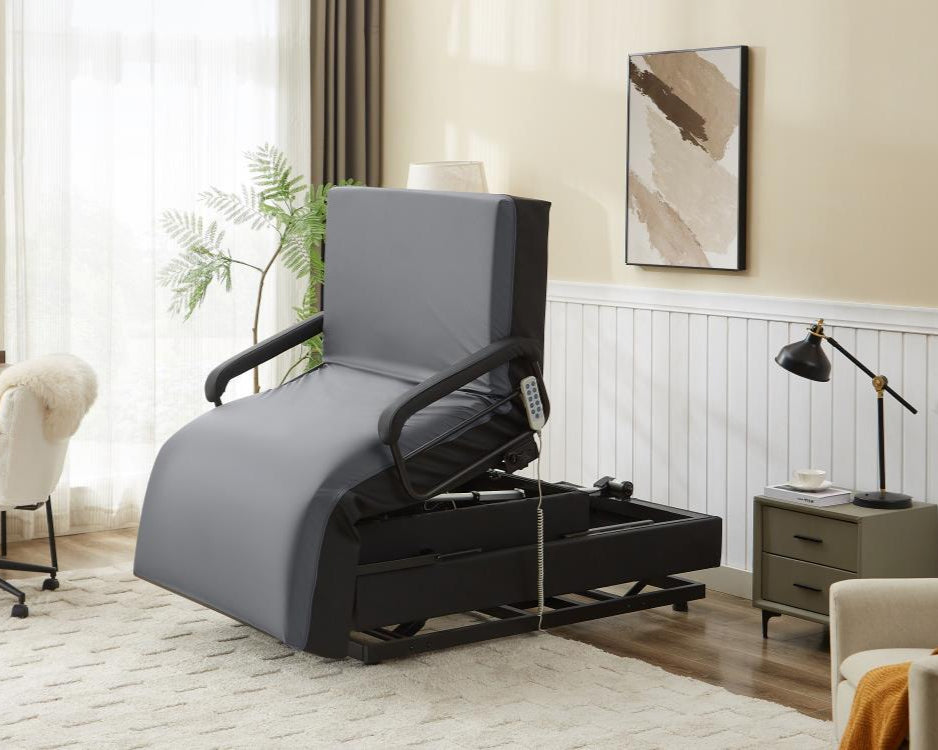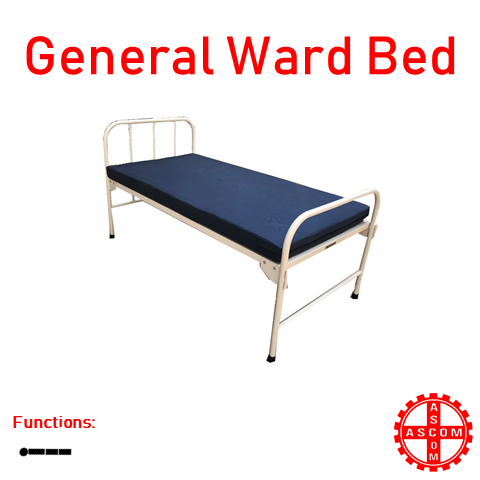10 Simple Techniques For Hospital Beds For Home Use
Table of ContentsUnknown Facts About Hospital Beds For Home UseThe Single Strategy To Use For Hospital Beds For Home UseRumored Buzz on Hospital Beds For Home UseThe Best Guide To Hospital Beds For Home UseHospital Beds For Home Use Things To Know Before You BuyWhat Does Hospital Beds For Home Use Mean?Facts About Hospital Beds For Home Use Uncovered
There are 3 primary kinds of health center beds: manual, semi-electric, and fully-electric. These beds make use of hand cranks to adjust the bed's height and increase and decrease the head and the foot.
Semi-electric beds have an electric motor to increase and lower the head and foot sections of the bed (hospital beds for home use). Full-electric beds have an electrical motor that can elevate the head and foot areas of the bed as well as the entire height and positioning of the bed.
The Buzz on Hospital Beds For Home Use
Some models can likewise move into more placements, such as the Trendelenburg (tilt) placement. There are several kinds of hospital beds, each made to satisfy certain client demands. Here are some typical kinds: This is one of the most usual kind of healthcare facility bed, designed for basic clinical use. It has a handbook or electrically adjustable headrest, foot rest, and elevation.
Lower to the ground than a conventional bed. This type of bed is developed for bigger patients, with a larger framework and greater weight capacity than a conventional bed. This kind of bed is created especially for kids, with smaller sized sizes than a basic bed. Unique features such as complete size side rails and anime design.
This kind of bed is designed for seriously unwell patients that need open tracking and specialized medical devices such as ventilators and mixture pumps. This kind of bed is developed for use throughout labor and distribution, with flexible positions and functions to support the mom and child throughout the birth procedure.
Examine This Report about Hospital Beds For Home Use
Numerous function and the devices execute increasing traction to various components of the vertebra and the extremities without relocating the human body. These are just a couple of examples of the kinds of healthcare facility beds offered. The specific kind of bed utilized will certainly depend on the client's condition, medical requirements, and other factors.
Below is the point you need to understand. A one-function healthcare facility bed is a clinical bed that permits a client to move just the head or foot section up or down. A 2 function hospital bed usually refers to a sort of clinical bed that has two adjustable features to assist clients in hospitals or treatment centers.

Rumored Buzz on Hospital Beds For Home Use
A 7-function ICU bed is a sort of clinical bed that offers a number of adjustable features to support seriously sick individuals in a critical care unit (ICU) (hospital beds for home use). The seven features typically consist of: Back-rest change: The backrest can be readjusted to numerous angles to assist the client rest up or exist down comfortably
Elevation modification: The bed can be elevated or decreased to make it easier for patients to enter and out of bed, and for caretakers to give treatment. Trendelenburg setting: The entire bed can be tilted to advertise blood flow and blood circulation in the body. Reverse Trendelenburg setting: The bed can additionally be slanted in the contrary instructions to promote blood hop over to here flow and circulation in the upper body.
While even more cost effective than electrical designs, these beds call for physical initiative for changes. The primary advantages of manual beds are their affordability and dependability, as they don't depend on electricity. Nevertheless, the requirement for hand-operated initiative can be a restriction in scenarios where fast changes are needed or where caretakers deal with physical obstacles.
See This Report on Hospital Beds For Home Use
Semi-electric health center beds use an equilibrium of manual and electric controls. These beds offer an optimal center ground in between manual and completely electric options, supplying convenience of usage without the complete expense of electrical designs.
Semi-electric beds are appropriate for clients that need moderate changes to the head and foot areas but can take care of without constant height changes. This makes them an economical option for those looking for comfort and ease without the demand for consistent repositioning. Completely electrical health center beds feature electric controls for seamless adjustments to the elevation, head, and foot sections.
Specialized health center beds, such as ICU beds, long-lasting care beds, and bariatric beds, are very carefully created to attend to certain clinical requirements. These beds provide tailored care for diverse person teams, enhancing both end results and comfort. In the complying with sections, we will explore the main types of specialty health center beds, describing their particular benefits and applications.
With years of experience in producing electrical linear actuators - hospital beds for home use and close collaboration with the medical care sector, TiMOTION is well-positioned to provide reliable healthcare remedies. Our vertically incorporated firm takes care of every action of the production procedure, from design to actuator setting up, guaranteeing we deliver extraordinary worth and personalized services customized to your specific requirements
Examine This Report about Hospital Beds For Home Use

To read more concerning incorporating these innovations into you could look here your products, call us today. Further reading:.
Data is sourced from the Medicare Expense Record.

Some Known Questions About Hospital Beds For Home Use.
A hospital bed is a bed made specifically for clinical purposes. It is not only a place for clients to rest, however also a system for clinical procedures. Unlike common home beds, healthcare facility beds typically have adjustable functions, which can promote clinical personnel to make numerous modifications according to the demands of individuals, such as changing the elevation, disposition, and support angle of the back and legs of the bed.